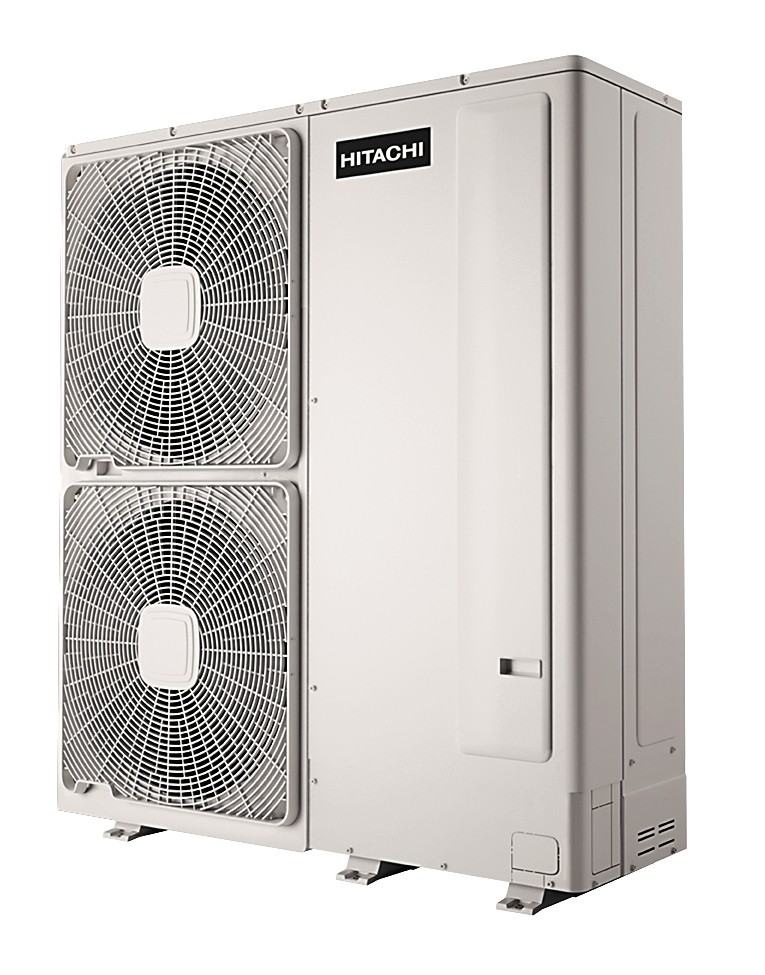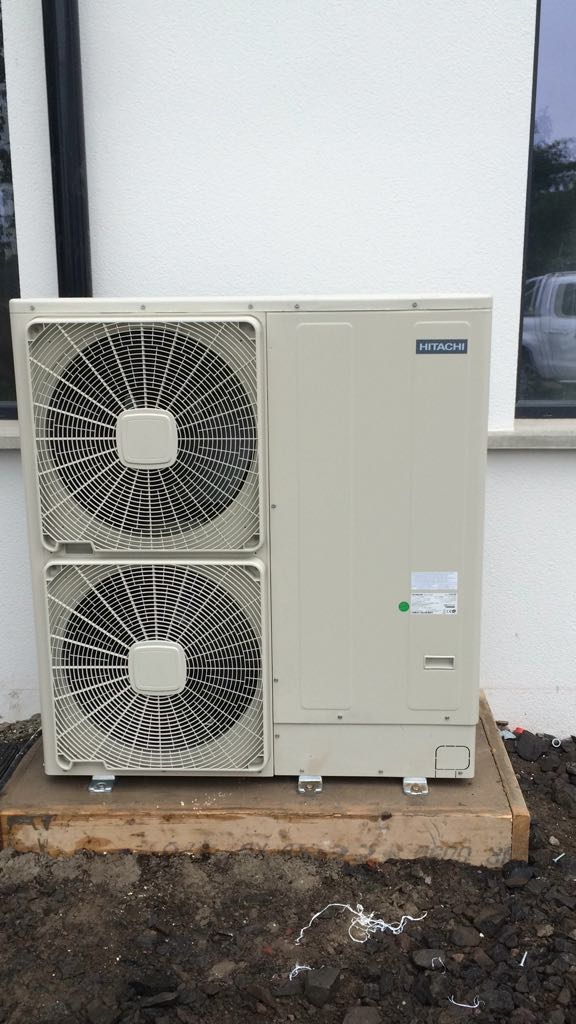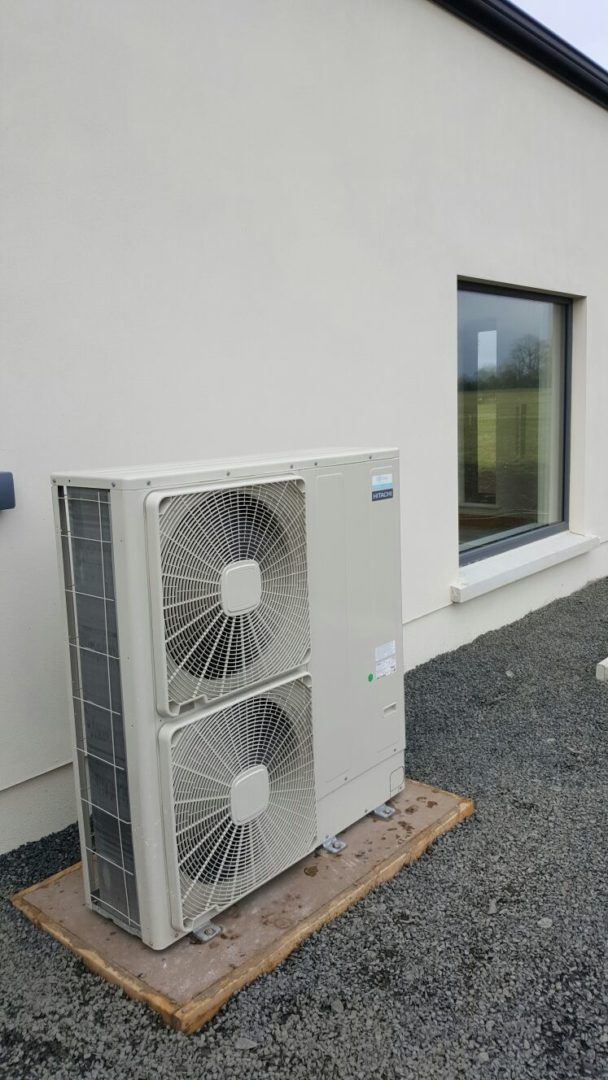Air Source Heat Pumps – everything you need to know.
January 11 2017
The Basics
Air Source Heat Pumps work using similar technology as ground
source heat pumps, but instead of having pipe work buried in the ground they
use the outside air as its energy source. In the UK and Ireland, the outside
air temperature rarely goes below -3°C.
The heat or energy moves from hot to cold (2nd law of thermodynamics) and the refrigerant in the heat pump boils at very low temperatures of -30°C so the
difference between the outside air and refrigerant create the energy that flows
into the heat pump. An Air Source Heat Pump uses a fan to draw the outside air across the evaporator.
An Air Source Heat Pump will have an efficiency rating of approximately 350 to 470% depending on system design and installation. In simple terms, this means that for every 1kw the heat pump uses to power the compressor, which is the main component in the heat pump, it will get the remaining 2.5-3.7kw of energy from the air outside. In comparison a fossil fuel gas or oil boiler will only ever be 70-95% efficient. The lower the heating system operating temperature the more efficient the heat pump will be and therefore this will result in lower running costs. Heat Pumps are an ideal fit for New Build Homes which have an Underfloor Heating System installed as the water running through the UF Heating Pipe work is less than 35oC.
Design Considerations
The Air Source Heat Pump unit is normally positioned at the rear
of the property backing directly onto the house, and it has to sit at least
300mm out from the wall. A typical 11–16kw unit is 1250mm wide, 370mm deep and 1380mm high. The smaller 7.5kw model which would do most houses up to 220m2 is the same width and depth but is 800mm in height as it only has a single fan whereas the bigger units have 2 fans. The unit can if required be positioned up to 10m from the dwelling but this increases the capital cost and will slightly increase the running cost.
At Daly we advise all our clients to work closely with their architect in order that they specify low U-values and come up with an air tightness brief to make the house a low energy dwelling from the outset. In our experience, our systems work really well in timber frame houses as they are well insulated and airtight but they can also perform as well in masonry houses as long as the air
tightness measures are applied correctly on site.

Hitachi Yutaki Air Source Heat Pump
Internally, the pipe work from the heat pump will normally come into the likes of a Cloak Room or Utility where it splits at this point between heating and hot water. This pipe work if situated in the Utility can be hidden in a cupboard, for example a broom cupboard. At this point the pipe work will split to serve the heating and hot water system with hot water being the priority with the heat pump system.
The cylinder that is specified must be specifically designed to work with a heat pump as the surface area of the coil inside the tank is much bigger than a standard cylinder. This helps the heat pump to heat the hot water at a faster rate and results in higher efficiencies with the system. A heat pump can provide a typical families hot water requirements without the need to use a backup immersion heater. The backup immersion should only be required to assist with carrying out Legionella Cycles.
Cost Considerations
In terms of capital cost an air source heat pump will cost approximately £2,000.00 – £3,000.00 more to install over a conventional oil or gas boiler system. Depending on fossil fuel prices, the payback compared to an oil boiler system will be between 3 to 6 years. The big difference in an oil boiler and a heat pump is the fact that a heat pump has an inverter compressor which means it can match the exact heat load of the house. It does this by varying the frequency of the inverter. The smallest oil boiler available is 15kw and has a high temperature heat output which is not designed for an UF Heating System. If using UF Heating with oil, mixing valves have to be fitted at manifolds which reduce the temperature of the water in the system from 80oC to 35oC. This results in the boiler cycling more often which results in higher running costs. Having mixing valves at the manifolds pushes up the cost of the UF Heating System and also adds to the maintenance requirements for the system. These are not required when using a heat pump to heat the UF Heating as the heat pump can match the exact temperature the UF Heating needs by using a process called weather compensation. Weather compensation uses an outdoor sensor which is pre-wired to the heat pump unit. This automatically adjusts the flow temperature going through to the house via the UF Heating according to the temperature outside. This intelligent operation helps to reduce running costs even further as it will tell the heat pump to run at a lower temperature on milder days and step it up when it gets colder outside. By doing this it also helps to maintain the indoor temperature at a comfortable level on a continuous basis.
In houses where we have heat pumps installed (going back 10 years now), we have found that the typical annual heating and hot water cost associated with having an air source heat pump will be in the region of £350.00 – £700.00 per annum for an average 3,000 square foot house. This is the electrical cost to operate the compressor in the heat pump. Compared to an oil boiler system, this usually works out at between 50-70% cheaper depending on the energy load of the house and the fuel prices. Electricity prices tend to remain more stable than oil prices and to know that your bill will be more or less the same every month allows clients to pre-plan that all important family budget. Some clients get an Economy 7 tariff installed where you get electricity for less than half price for 7 hours at night which can be a very cost effective way of operating a heat pump system. Economy 7 can be a good solution for home owners who are prepared to operate their other domestic appliances at night time also, and who have a house that is well enough insulated to enable the house to hold it’s temperature from morning to night, allowing for only a minimal drop in temperature (0.5-1.0 oC)
The other main benefits a heat pump has over a gas or oil boiler apart from the lower running costs is that it has no harmful emissions, it does not require regular maintenance, it does not require fuel top ups every few months as it is using electricity to operate it and this also means the home owner only has one utility bill for the home. With more energy than ever coming from renewable sources, we see heat pumps here in Ireland and the UK as being part and parcel of future energy efficient heating options.
One only needs to look to Sweden where 80% of all domestic houses are already heated by heat pumps! We will get there….someday soon…
Below is a few examples of some recent Hitachi Yutaki Air Source Heat Pumps we have recently installed, the first image is a 14kw Unit installed in Ballymena, and the second is the smaller 7.5kw Unit installed in Monaghan.
If you would like more information on getting an ASHP installed in your new or existing home, please do not hesitate to contact us.


